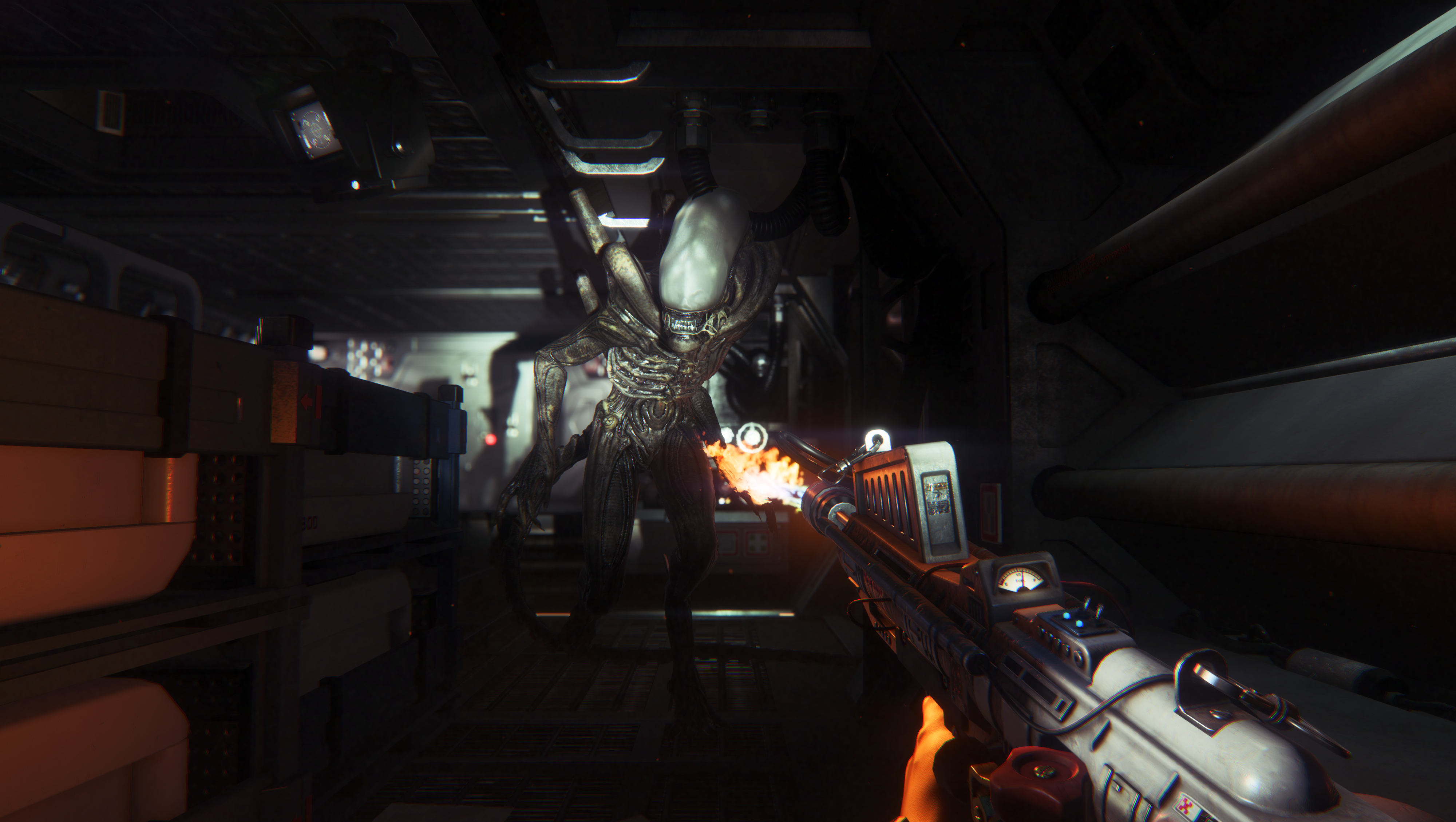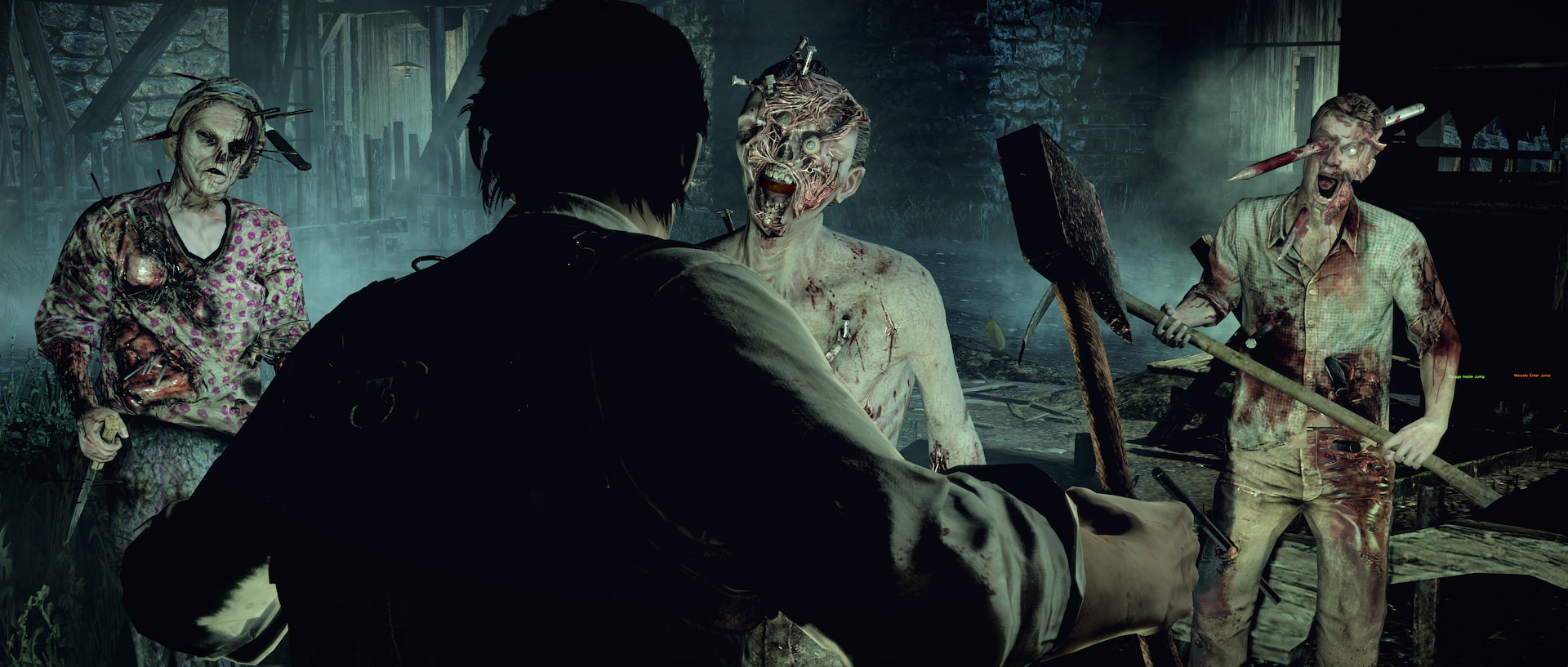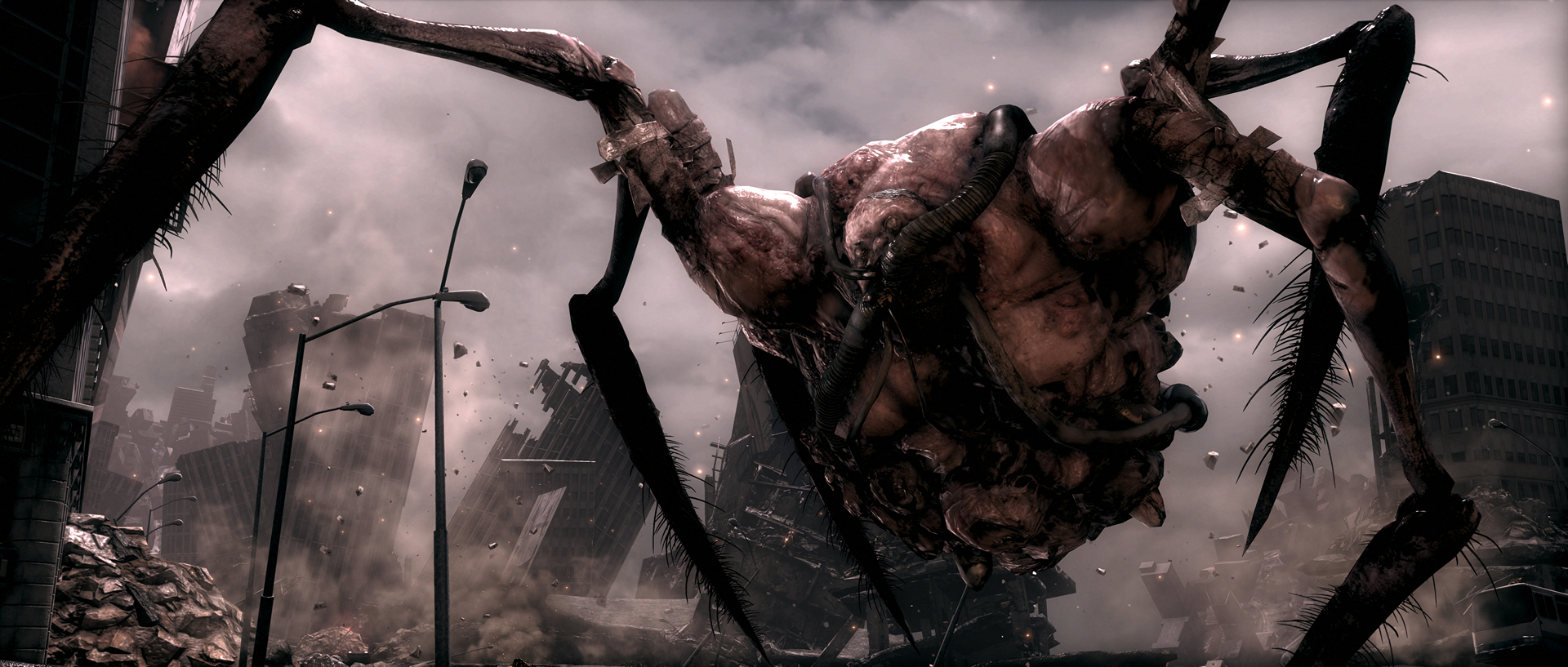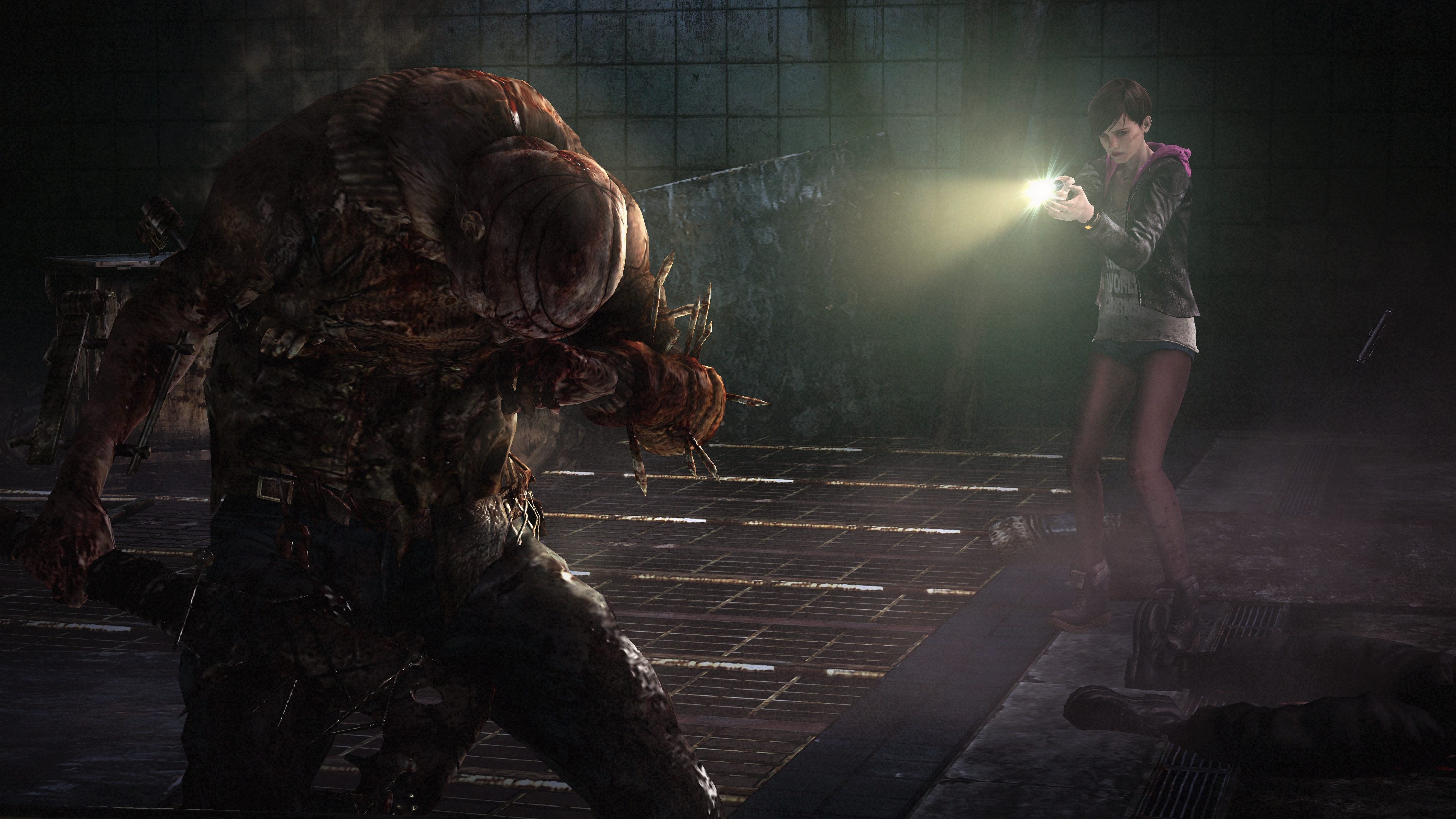On paper, the Sevastopol space station seems like a pretty terrible place to visit.
Steam leaks from the vents, coating the floors in an eerie layer of mist; the lighting is pretty much always flickering madly -- when it works at all -- and the station's synthetic robotic assistants are on the homicidal fritz.
Then there's the small matter of a cunning, devastatingly lethal alien prowling the passages with the singular purpose of ending your existence.
And yet, despite Sevastopol's utter lack of travel brochure charm, thousands of gamers have willingly entered its dimly lit corridors in "Alien: Isolation," a recently released video game set in the world of Ridley Scott's classic "Alien" horror film franchise. Even more surprisingly, many of them say they're enjoying their experience, which reviewers have described as "wonderfully scary" and "terrifying in a near-perfect way."
"It truly puts you in the movie," says 24-year-old Gage Hatfield of Chattanooga. "It is terrifying, stressful and totally awesome. My heart hasn't stopped pounding since picking this game up."
In the lead-up to Halloween, gamers have been hit with a horrific one-two punch. A week after "Alien: Isolation," which released Oct. 7, they received "The Evil Within," a psychological horror game placing players in the unenviable role of a detective investigating the scene of a mass murder at a mental hospital.
And thanks to the computing power of next-generation consoles the Xbox One and Playstation 4, game designers have even more tools at their disposal to dial the nightmares up to 11. The gore is that much more visceral. The shadows that much more menacing. The monsters -- human and supernatural alike -- that much more believable and terrifying.
Although visuals aren't everything, developers say the hardware improvements ushered in by the latest generation of consoles are making it easier to craft terrifyingly believable worlds that help to sell the scares.
Latest horror video games releasesHorror and video games have been bedfellows for a long time. Here's a breakdown of the debut and latest (or upcoming) releases in some of the most popular franchises.* "Alone in the Dark" (1992)/"Alone in the Dark: Illumination" (2014)* "Doom" (1993)/"Doom 3 BFG Edition" (2012)* "Alien vs Predator" (1994)/"Alien: Isolation" (2014)* "Clock Tower" (1995)/"Haunting Ground" (2005)* "Resident Evil" (1996)/ "Resident Evil Revelations 2" (2015)* "Parasite Eve" (1998)/"The Third Birthday" (2011)* "Dino Crisis" (1999)/"Dino Crisis 3" (2003)* "Silent Hill" (1999)/"Silent Hill: Book of Memories" (2012)* "Fatal Frame" (2001)/"Fatal Frame V: Oracle of the Sodden Raven" (2014)* "Siren" (2003)/"Siren: Blood Cures" (2008)* "F.E.A.R." (2005)/"F.E.A.R. 3" (2011)* "Alan Wake" (2010)/"Alan Wake's American Nightmare" (2012)* "Dead Space" (2008)/"Dead Space 3" (2013)* "Amnesia" (2010)/"Amnesia: A Machine for Pigs" (2013)
"Reality is important in horror. Even in a fictional setting, if it looks realistic, you can believe in it," says "The Evil Within" director Shinji Mikami in a July interview with gaming website 4Gamer. "Thanks to next-gen hardware we can take it to one level higher than before.
"In order to create true dread without any filter, it's important to be able to create a palpable atmosphere. In that sense, the specs of the [Playstation 4] are alive."
The power of next-generation consoles to amp up the scares isn't just evident in the improved visuals, though. Some of the most innovative improvements to horror game design in titles such as "Alien: Isolation" are distinctly behind-the-scenes, says James Howell of Chattanooga.
"The alien in 'Alien: Isolation' is minimally scripted, and the programming that determines its [behavior] can function alongside high-end production elements like graphics and sounds," the 34-year-old says. "This creates an environment that's more fluid and less predictable."
However, whiz-bang features and graphical spit and polish aren't everything when it comes to well-crafted horror. Many gamers say they have fond memories of being terrified by titles from the mid-'90s, when the use of 3D graphics was still being pioneered.
Tris Vickery, 34, says her first memories of being scared by a game were while playing "The 7th Guest" and "Alone in the Dark." When they released in 1992, these titles were among the first to use detailed pre-rendered backgrounds, live action cinematics and 3D character models.
Compared to modern titles, the characters in "7th Guest" and "Alone in the Dark" move with the grace of tanks and the games' monsters look simple and abstract. Twenty years ago, however, immersive storytelling made the horror in those games seem all too convincing, Vickery says.
"They were both very atmospheric and scary in their own ways, enough for me to not be able to finish either," she says.
The games that are most successful at frightening players aren't always the best-looking, she adds, but the ones that tell a creepy story and establish an atmosphere foreboding enough to stand players' neck hairs on end.
"An effective game needs to get under your skin and bother you on a deeper level," she says.
Despite his appreciation for the technology driving the most recent horror games, Howell says his fondest memories within the genre are for the original "Silent Hill," which released in 2001 on the now 14-year-old Playstation 2. By modern standards, the graphics of "Silent Hill" are a muddy mess, but he was taken in by the tale of a man searching for his missing daughter in a hellish nightmare town with only a flashlight and a static-y radio for comfort.
"[The] pacing, atmosphere, presentation and an unstable story make it a favorite," Howell says.
Thrill of the chase
But why do gamers enter these digital horrorscapes to begin with? Why choose to control characters who are destined to face vengeful spirits, demons or chainsaw-wielding maniacs, often with only the barest means to defend themselves?
Academics say those drawn to horror video games are motivated by the same impulse that encourages people to watch scary movies and read scary books. They long for the anxiety-inducing thrill of experiencing terror through someone else's eyes from the safety of their living room.
The interactive nature of video games can make the experience of horror more suspenseful and immersive, which only serves to heighten the appeal to some thrill-seekers, says Tanya Krzywinska, a professor of digital games at Falmouth University in the United Kingdom.
"The interactive dimension of horror games enables a more acute experience of losing control than that achieved by most horror films," Krzywinska writes in a 2002 paper titled "Hands-On Horror."
"Game events are often taken out of the player's hands, a stratagem which allows the deployment of horrific pleasures closer to those of the horror film. These moments actively work to produce the crucial sense of being out of control that is inherent to the experience of horror."
How games generate a sense of impending doom varies widely within the genre.
Early titles, such as "Resident Evil," "Silent Hill" and "Fatal Frame," presented their stories using fixed camera angles that mirrored the kinds of framing used in horror films. In such games, developers were able to engineer scare moments by positioning monsters and other horrific elements just off-screen with only their slobbering grunts or ghoulish whispers to alert players that something dark was coming their way.
Thanks to the increasing power of game consoles and their capability of rendering completely 3D virtual environments, later entries in the genre -- including sequels to the previously mentioned titles -- began giving players control over the in-game camera. That advancement posed new challenges for game developers. By allowing players to control what they see and hear, they were forced to employ different tactics to ensure players experience the desired set piece frightening moments.
In 2008's "Dead Space," for example, gamers have complete control over their perspective as they take on the role of an engineer who is forced to navigate a derelict space ship filled with horrifically mutated creatures. According to the game's creators at EA Redwood Shores (now Visceral Games), achieving each scary moment in "Dead Space" was the result of a carefully choreographed collaboration between different members of the development team.
"[Players] can be looking at any place at any given time, so in order to ensure that we can hit them with a good scare moment, you really need to work with the design team, with the art team, to frame and focus on a specific area or event within the game," producer Steve Papoutsis says in a making-of video released prior to the game's launch.
"It's a combination of putting them in the right mood, getting them in the right mind frame, pointing them at something you want them to look at and hitting them with something else," he adds. "It's very challenging to establish something that's going to be scary for people."
New approaches
For years, designers have experimented with novel ways to ensure players feel as debilitated by the virtual horror as the characters they control.
When it released in 2002, "Eternal Darkness: Sanity's Requiem" pioneered the use of "sanity effects," which used changes to the game's presentation to reflect characters' increasingly tenuous grip on reality. As monsters are encountered, the character begins to experience vivid hallucinations and act without the player's control. The game will even attempt to trick players by making it appear as though bugs are crawling across the TV screen or by making it appear as though their gaming console is malfunctioning.
When he played "Eternal Darkness" in 2002, David Penance of Trion, Ga., says these sanity effects were as novel as they were unnerving.
"It was more of an element of surprise, nothing that will cause nightmares, just the fact that you can be playing and the game would do things," the 36-year-old says. "You'll never know how scared I was when [an on-screen message] popped up that my memory card was being erased."
The newest survival horror titles are using technology to experiment and take chances, too, although at least one is seeking to improve the genre by taking it back to its roots in psychological horror.
"The Evil Within" creator Mikami is known within the games industry as the "godfather of horror" since he's the creator of the "Resident Evil" game series that later spawned a series of blockbuster films. In interviews about "The Evil Within," he says the genre increasingly has placed too much emphasis on action and, in the process, has lost the sense of helplessness that defined early horror titles.
The goal with "The Evil Within," Mikami says, was to develop a next-generation title that, while prettier to look at, took the genre back to its roots in psychological horror.
"To me the definition of survival horror is a game where fear and the sense of exhilaration coincide," he says in a September interview with the magazine Game Informer. "I wanted to make a pure survival horror game. ... I think there's more depth [to the new game consoles], [b]ut it's a fine line between making it look beautiful versus how visually scary it looks as horror."
In "Alien: Isolation," which features a similarly helpless character, the defining feature is the artificial intelligence of the titular alien, also known as a Xenomorph. The alien cannot be damaged by the player so the only option is to flee from it or hide. And unlike most horror games, which carefully script how monsters behave and react to players, the extraterrestrial menace in "Isolation" responds to players dynamically and intelligently, hunting them using simulated senses of sight, smell and hearing.
The result, players say, is behavior that is realistically unpredictable and prevents them from being able to anticipate the scares like they would in other games.
If "Isolation" is any indication of what to expect from the next-generation of digital horror, Cookeville, Tenn., resident Ashley Frazier says she's thrilled at the scares the future holds.
"'Alien: Isolation' has been great," Frazier writes in a post to the Times Free Press Facebook page. "I've definitely been jerked out of my hidey holes, beat up and chased around that stupid ship when in real life I would've flung myself out into space a loooong time ago."
Contact Casey Philllips at cphillips@timesfreepress.com or 423-757-6205. Follow him on Twitter at @PhillipsCTFP.




